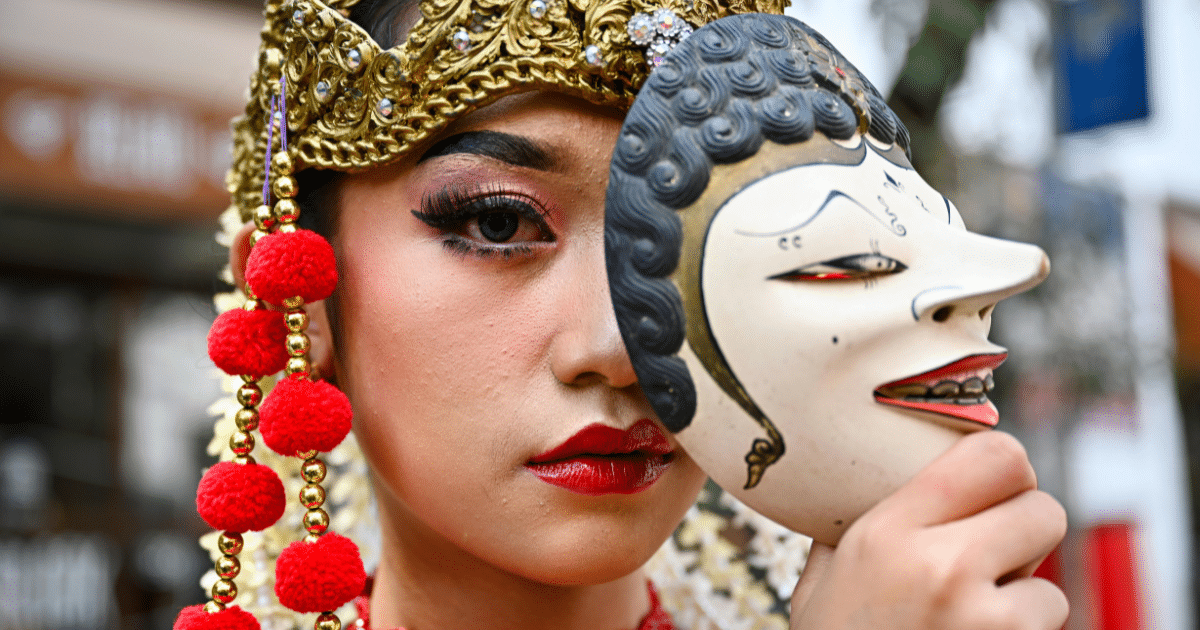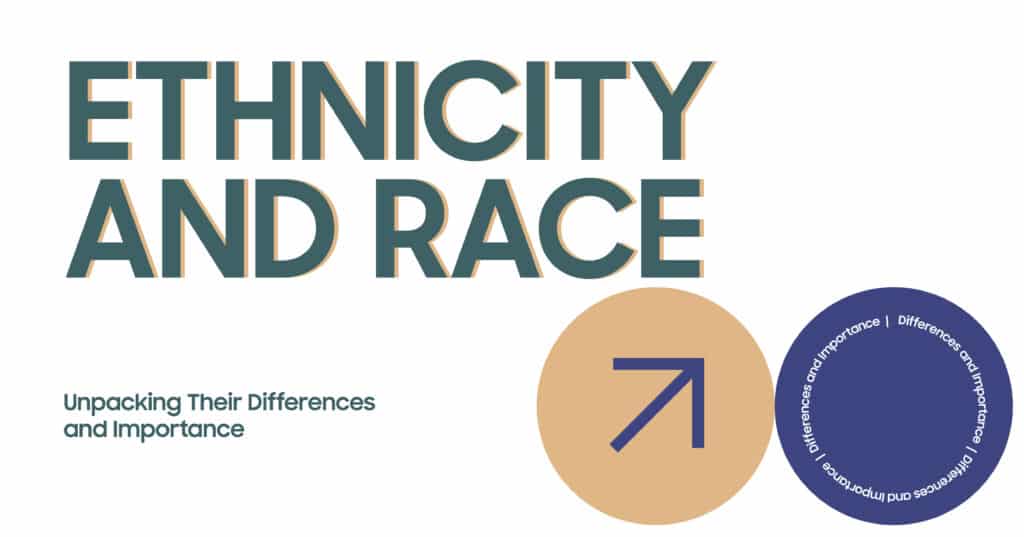In a society that’s more connected and diverse than ever before, understanding the difference between ethnicity vs race is not just a matter of political correctness, it’s a matter of identity, inclusion, and respect. Yet, according to a Pew Research Center study, over 40% of Americans say they struggle to understand what separates race from ethnicity. This confusion can lead to stereotypes, discrimination, and the erasure of individual experiences within our communities.
When forms ask you to check a box for your “race” or “ethnicity,” what are you being asked? Are these categories based on skin color, heritage, cultural traditions, or geographic origin? For many, these questions strike at the core of cultural identity and belonging. Failing to understand them not only dilutes meaningful conversations about diversity but also invalidates someone’s lived experience.
Defining Ethnicity and Race: Key Differences and Similarities
Understanding the distinction between ethnicity vs race begins with clear definitions. While these terms are often used interchangeably, they represent different concepts that play unique roles in shaping cultural identity, heritage, and social perception.
What Is Race?
Race is typically associated with physical characteristics that groups of people share, such as skin color, hair texture, and facial features. It is a social construct, not a biological fact, that has been historically created to classify and differentiate groups based on visible traits. These classifications have been used for centuries to support political, economic, and social agendas.
For example, Someone might be classified as Black, White, Asian, or Native American based on appearance alone, regardless of their cultural background or upbringing.
What Is Ethnicity?
Ethnicity, on the other hand, refers to a person’s cultural identity, shared traditions, language, religion, ancestry, and social customs. It is rooted in heritage and a shared sense of belonging to a specific cultural or national group. Unlike race, ethnicity encompasses the cultural markers that shape a group’s identity beyond physical traits.
For example, two people may both be classified as Black racially, but one may be Jamaican while the other is Nigerian, reflecting different ethnic backgrounds.
Similarities Between Race and EthnicityHistorical Perspectives and Their Impact on Modern Society
The concepts of race and ethnicity have evolved over centuries, deeply shaped by historical events, power structures, and societal norms. Understanding their historical roots is essential to recognizing how they continue to influence modern systems of identity, privilege, and inequality.

The Origins of Racial Classification
The modern idea of race began taking form during European colonization and the transatlantic slave trade. In the 17th and 18th centuries, European scientists and philosophers began categorizing people based on physical characteristics, particularly skin color, in an attempt to create a hierarchy of human beings. These racial classifications were not based on science but were used to justify slavery, colonization, and systemic oppression.
For example, pseudoscientific theories like phrenology and eugenics falsely promoted the belief that some races were intellectually or morally superior to others.
Ethnicity and the Role of Cultural Identity
Ethnicity, by contrast, has historically been linked to language, religion, tribal affiliation, and national origin. While ethnicity was also used to define and sometimes divide people (as seen in ethnic cleansing or nationalist movements), it often served as a source of cultural pride and community identity.
For example, Immigrant communities in the U.S. often maintained strong ethnic identities, such as Italian, Chinese, or Haitian, preserving their language, customs, and traditions even as they adapted to a new country.
Lasting Impact on Society Today
The legacies of racial and ethnic categorization are still visible in today’s world:
- Studies show racial minorities often receive unequal care due to biases rooted in outdated medical beliefs about biological differences.
- School curricula may underrepresent or misrepresent the histories and contributions of ethnic minorities.
- Racial profiling and over-policing of certain demographic groups remain ongoing issues.
- Ethnic diversity in professional spaces is improving, but gaps in leadership roles and wage disparities still reflect historical disadvantages.
At the same time, there is growing recognition of the importance of cultural identity and ethnic diversity in creating inclusive societies. Social movements like Black Lives Matter and efforts to decolonize education are pushing institutions to confront their histories and rethink how race and ethnicity are understood and addressed.
Addressing Common Misconceptions and Stereotypes
When discussing ethnicity vs race, many misconceptions and stereotypes often arise that can cloud understanding and perpetuate prejudice. Clearing up these misunderstandings is crucial for fostering respect and appreciation for the diverse ways people identify themselves and others.
The Following Common Misconceptions and Stereotypes should be addressed:
- Race is biologically determined and fixed.
- Ethnicity is just a subset or a less important form of race.
- All individuals within a racial or ethnic group share the same culture or traits.
- People can only identify with one race or one ethnicity.
- Discussing race and ethnicity increases division rather than understanding.
- Physical appearance alone defines a person’s ethnicity.
- Ethnicity and race do not affect social experiences or opportunities.
- Ethnic identity is always visible or obvious.
The Influence of Ethnicity and Race on Policy and Politics
Ethnicity and race play a significant role in shaping policy decisions and political landscapes worldwide. Governments often use racial and ethnic categories to allocate resources, enforce laws, and design social programs. These classifications can influence voting patterns, representation in government, and access to opportunities.
However, policies based on race or ethnicity can be double-edged: they may aim to address historical inequalities through affirmative action or minority protections, but they can also reinforce divisions or lead to discrimination if not carefully managed. Understanding how racial classification and ethnic diversity impact political systems is crucial for promoting fairness and inclusion in democratic societies.
| Area of Influence | Impact of Race | Impact of Ethnicity |
| Voting Rights and Representation | Minority racial groups may be underrepresented in government; racial gerrymandering can affect election outcomes. | Ethnic minorities may seek political representation to protect cultural interests and language rights. |
| Affirmative Action and Equal Opportunity | Policies are often designed to address racial disparities in education and employment. | Programs may focus on preserving cultural heritage or supporting disadvantaged ethnic groups. |
| Immigration Policy | Racial profiling can influence immigration enforcement and border control. | Ethnic communities can shape immigration laws based on national origin or cultural assimilation. |
| Healthcare and Social Services | Racial disparities in healthcare access and outcomes lead to targeted interventions. | Ethnic-specific health programs address language barriers and cultural needs. |
Moving Forward: Embracing Diversity and Inclusion
As our societies become increasingly diverse, embracing the rich tapestry of ethnicity, race, and cultural identity is more important than ever. Recognizing and respecting the differences and similarities between these concepts fosters a more inclusive environment where everyone feels valued and understood. By promoting multiculturalism and challenging stereotypes, we can build communities that celebrate heritage and encourage unity.
At Treat Tennessee, we are committed to supporting individuals and communities through education, advocacy, and culturally sensitive care. If you want to learn more about how ethnicity and race impact mental health, identity, or social dynamics, or if you need guidance in navigating these complex topics, contact us today. Let’s work together to promote understanding, respect, and inclusion for all.

FAQs
What distinguishes cultural identity in terms of ethnicity and race from ancestry and heritage?
Cultural identity focuses on shared traditions, language, and social practices (ethnicity) or physical characteristics (race), while ancestry and heritage relate more broadly to one’s lineage, family history, and inherited cultural background.
How do racial classification and ethnic diversity influence multiculturalism in today’s societies?
Racial classification often provides broad categories for demographic understanding, while ethnic diversity brings in the rich, detailed cultural practices and identities that shape inclusive multicultural societies.
In what ways do ethnicity and race as social constructs affect our understanding of demographic groups?
Because both are socially constructed, they influence how groups are categorized and treated, often shaping policies, social interactions, and perceptions that impact opportunities and inclusion.
Can the interplay between ethnicity and race shape an individual’s cultural identity and social belonging?
An individual’s racial background may influence societal perception, while their ethnicity shapes their lived cultural experiences, together forming a complex sense of identity and community connection.
What is the historical impact of race and ethnicity on policy-making and political representation in multicultural societies?
Historical racial and ethnic classifications have shaped laws, resource allocation, and political power dynamics, both creating barriers and informing efforts to promote equity and representation today.









